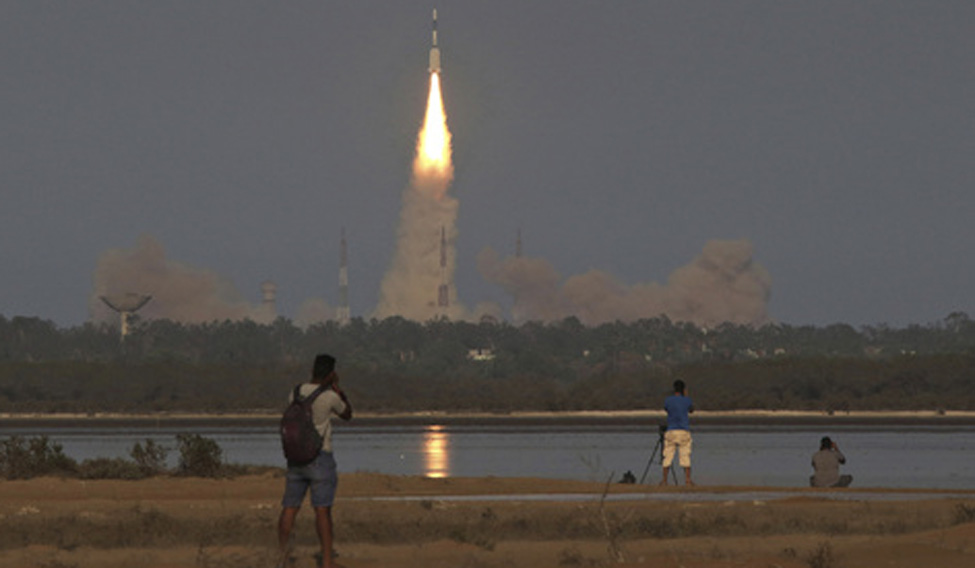Sabka satellite vroomed into space, and India has made a giant leap in space diplomacy, becoming the big brother, providing satellite connectivity to South Asia.
Heads of missions of the participating countries—Afghanistan, Nepal, Bhutan, Sri Lanka, Bangladesh and the Maldives—were invited to the viewing gallery at Sriharikota to witness the launch of GSLV-F09 rocket carrying the India’s GSAT-9, which promises to provide a slew of benefits to these countries.
It is still not clear, however, why the Indian Space Research Organisation (ISRO) did not follow tradition and invite the media for the launch. Why was it kept a “close door” event? Was it the fear that the launch may not be successful? The GSLV, though certified a motorable vehicle by ISRO, does not have a stellar record, having failed in five of the ten flights it has undertaken. Or was it that till the last minute, no one had any idea whether Prime Minister Narendra Modi would himself attend the launch.
On Wednesday evening, the Ministry of External Affairs expressed complete ignorance about the schedule of events, though the ministry must have coordinated not just the visit of the heads of the missions but also the video links with the various countries.
The launch, at 4.57 pm, however, went off smoothly, even as people sat biting their nails in suspense. India's reputation and ambition rode atop the vehicle, along with the satellite.
Soon after ISRO chairman Kiran Kumar declared the launch a success, Modi addressed the nation via a video link. He said the satellite marks the fulfillment of India's commitment and the beginning of the journey to build the most advanced frontier of our partnership.
Modi said the project will touch the lives of the people of Afghanistan, Bangladesh, Bhutan, Maldives, Nepal, Sri Lanka and India through regional cooperation in space technology applications in telecommunication and broadcasting, telemedicine, teleeducation, e-governance, banking, ATM services, cellular back haul, metereological data transmission, disaster response and networking of academic and research institutions.
In a snide remark at Pakistan, which did not join the project, he said the satellite demonstrated our collective choices for our citizens.
The satellite will undergo a series of orbit raising manoeuvres and will reach operational status by May 25.
In order to enable test television transmission in the national languages of the participating countries, India has established required ground station facility in New Delhi. This facility will also support the demonstration of the interactive services to member nations.
Shortly after the PM's speech, heads of all the member nations too made their addresses through video links.
What can member countries do with South Asian Satellite?
Banking/ATM: Using the satellite, every member country can setup their own autonomous nationwide banking networks, especially in remote areas
e-Governance: They can establish countrywide network for accessing government schemes by its citizens
Cellular backhaul: Connectivity to remote regions, where terrestrial solution does not exist, can be facilitated by nationwide cellular backhaul notworks
Infrastructure: A common ground infrastructure for connecting member nations to support activities in metereological data transmission and networking of educational and research institutions.





